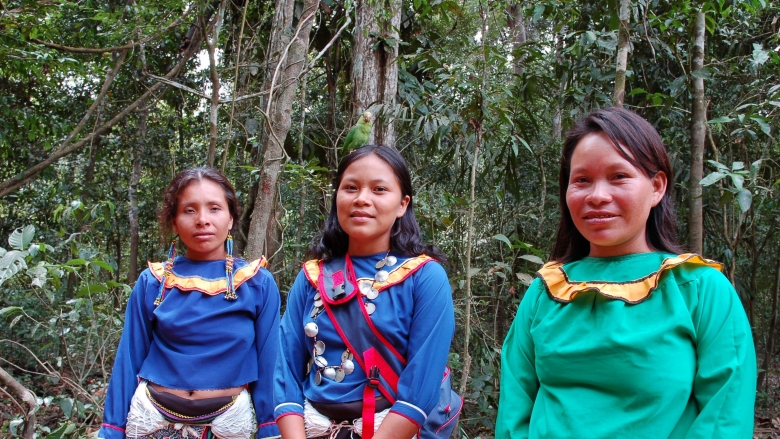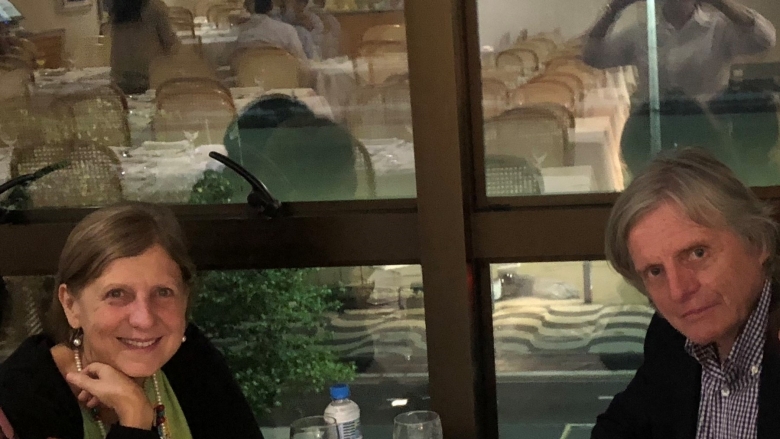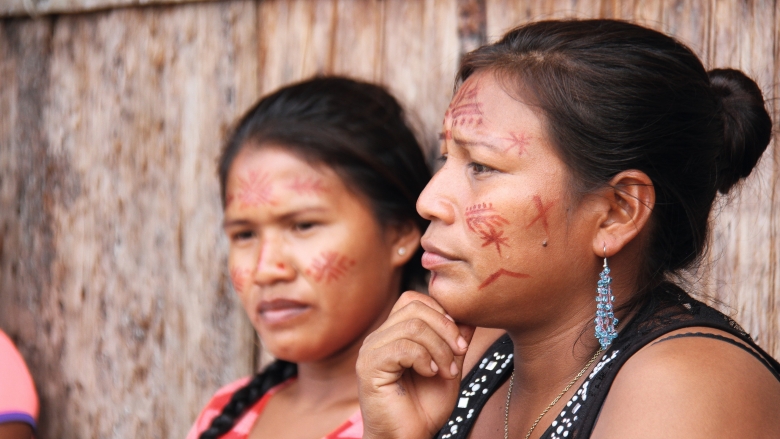When and why did you start working with Indigenous Peoples?
It started back in 1972, when I went to the Colombian Amazon and traveled for six months in a canoe. People spoke languages I didn’t understand but we communicated through smiles. It was during this trip that I saw how indigenous cultures were being destroyed by the encroachment of the Western worldview and I decided to do something about it. With the elders, we exchanged myths of origin, talking about heroes, gods, life and nature, which allowed me to access and start understanding their cosmology and traditional practices for safeguarding the environment.
My original plan was to stay a couple of years—but 45 years later I am still here. I was able to relate to them, gain their trust, and then I became more political and initiated my fight for the recognition of indigenous collective territories— resguardos—and indigenous rights (including those related to protecting their languages). Currently, Indigenous Peoples in the Colombian Amazon own a territory the size of the United Kingdom and their rights are protected by the constitution. Perhaps their greatest achievement is they have regained their dignity and understand that the Western world is not superior, that their culture is equally valid. Now we must go beyond simply recognizing their rights and work with them hand in hand on equal terms to protect the rainforest.
How do you correlate indigenous languages and knowledge to the conservation of biodiversity?
The worldview of Indigenous Peoples is the fundamental belief that humans, animals, plants, land, and rivers balance each other as integral parts of life. This holistic understanding of the world is expressed and kept alive through their languages, rituals, and mythology. Their language is part of their identity and is the spirit of their cultures. Through it, comes not only their knowledge, but their intimate way of understanding nature and how humans relate to nature.
The current predominant way of understanding nature and how to conserve it by non-indigenous people is incomplete as it is based on humans perceiving plants and animals as objects and not subjects of the whole system. It misses out on the intuition and profound feeling and understanding of how people relate to our environment as a whole.
Indigenous Peoples have this deep understanding and it strengthens their connection to the land, forest, rivers, etc. It is a way of understanding and living in harmonic flow with nature. This worldview has made them resilient, and sustainably using and managing their natural resources has helped them survive domination and destruction. Fortunately, we are beginning to understand from this worldview that nature is an integrated system and if we want to survive, the whole ecosystem must survive.
Realizing our dependency on nature to survive has raised the idea of transforming nature from being a rightless object to be a subject with the right to exist and flourish. Some of us have been lucky to learn from and to be inspired by Indigenous Peoples and the way they understand and express their world through language.
Photo credit: Ivonne Cueto
What are the most successful strategies to support the survival of Indigenous Peoples, particularly in the Amazon?
In the case of Colombia, 55 percent of the Amazon belongs to Indigenous Peoples. And with their systemic and holistic understanding of the forest they are taking care of it. North of the Amazon River for instance you find the largest continuous forest in the world, conserved largely as protected areas and as part of the Indigenous Peoples’ territories. The involvement of youth has been fundamental. A recent strategy has been to assist young indigenous male and female leaders to research and systemize knowledge of their culture, language, and rituals from their elders so they can be passed along to future generations. This process has also embedded in them a sense of pride in their culture and languages.
A different strategy relates to what the late cultural historian and outspoken environmental advocate Thomas Berry explained: “The universe is not a collection of objects but a community of subjects.” Existence is derived from and sustained by the relationship of each being with every other being. This means that trees, plants, animals, and water are a manifestation of the universe and in that sense, we are all a community that must live together in balance. What we receive from nature, we need to give back to nature. Consistent with this notion, in Colombia, significant progress has been made to recognize specific high biodiversity areas, like the Amazon region, as a subject of rights and this has in-turn led to positive policy actions. Examples from Ecuador and Bolivia are even stronger: Ecuador was the first country to include the rights of nature in its constitution, and in 2010 Bolivia instituted the historic Law of Mother Earth.
The key strategy to protect the Amazon relates to its connectivity and that is what the Indigenous People profoundly understand. The Amazon is a connected ecosystem between plants, animals, water, and humans whose flow is necessary for its survival. The Amazon is a key organ in the whole planetary system. The water that flows down the rivers goes back as flying rivers (a movement of large quantities of water vapor transported in the atmosphere from the Amazon to other parts of South America and as far as the Midwest in the United States) and keeps the climate regulated as part of the whole system. (This Gaia Amazonas video describes the process and the Indigenous Peoples’ worldview.)
Connectivity in the Amazon is not only biological but also cultural. Efforts are being made to connect protected areas including indigenous territories, but organizations, civil society, and governments need to cooperate and jointly act upon this idea of conserving and restoring connectivity. Learning what the Indigenous Peoples have practiced over the years can help transform development paradigms. Respecting indigenous values, thoughts, and knowledge and acknowledging their holistic vision can help protect the Amazon region.
Their knowledge shall enlighten our path to conserve the Amazon.




